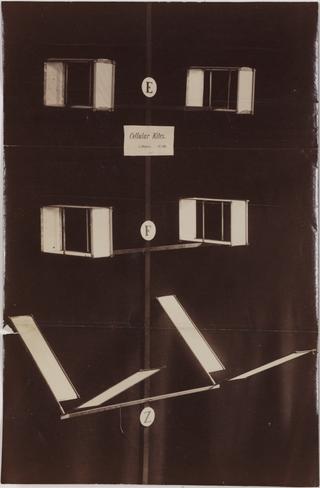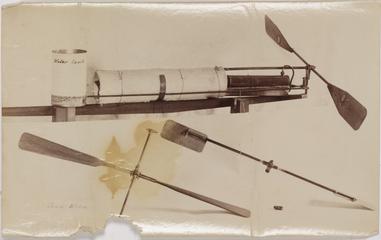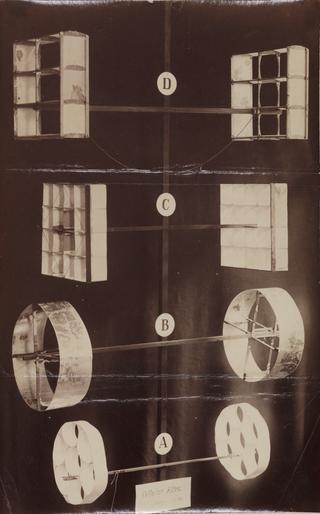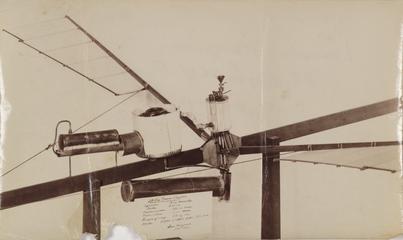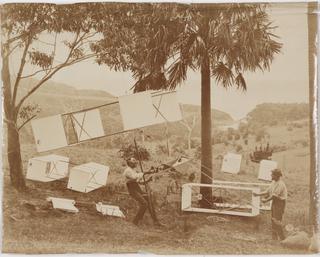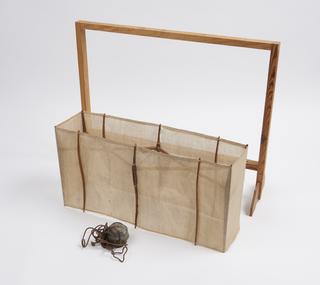
Lawrence Hargrave 1850 - 1915
- occupation:
- Astronomer, Aviation pioneer, Engineer, Explorer, Inventor
- Nationality:
- English; Australian
- born in:
- Greenwich, London, Greater London, England, United Kingdom
1856 - his father travelled to New South Wales with several of Lawrence's siblings. 1865 - along with his mother and the rest of his siblings, immigrated to Sydney. 1867 - was apprenticed in the engineering workshops of the Australasian Steam Navigation Co. 1872 - sailed for New Guinea aboard the unseaworthy brig Maria which struck Bramble reef and sank with a great loss of life. 1877 - elected a member of the Royal Society of New South Wales. 1879 - worked as the extra observer (astronomical) at Sydney Observatory. 1881 - observed the transit of Mercury. 1883 - due to the income from private investments in mining, he gave up paid employment and became a gentleman-inventor. 1884 - submitted a paper called Trochoided Plane to the Royal Society in which he expounded his theory of flight. 1887 - began to work on the problem of a machine heavy enough to carry a man's weight. 1889 - built a compressed air engine powered by an arrangement of three rotating cylinders which was one of the great inventions of his career. 1892 - began experiments into the behaviour of curved surfaces for the wings of his flying machines. 1894 - lifted himself from the beach at Stanwell Park, Sydney, in a four kite construction, attached to the ground by piano wire. 1909 - became first vice-president of the New South Wales section of the Aerial League of Australia. Presented to the Royal Society his elaborately constructed, circumstantial and obsessively held Lope de Vega theory, many years in the forming, that two Spanish ships, the Santa Ysabel and Santa Barbara, had found their way into Sydney Harbour, stayed several years and left in 1600, only to be wrecked on their voyage home. 1966-1994 - featured on the obverse of the Australian $20 note.
